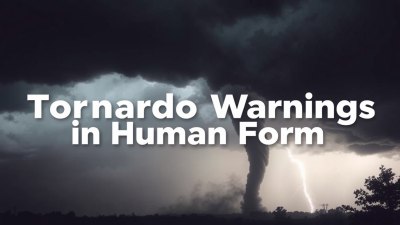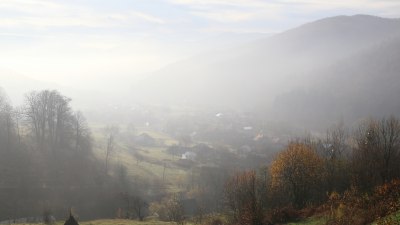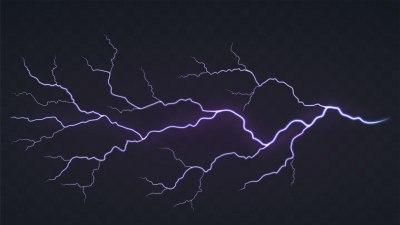Some People Are Tornado Warnings in Human Form
Explore the metaphor of people as tornado warnings, embodying chaotic energy, disruption, and transformative impacts on lives and environments.

In the complex tapestry of human interactions, certain individuals can be aptly described as tornado warnings in human form. Like the weather phenomenon they metaphorically resemble, these people embody a powerful and often unpredictable force, signaling impending upheaval and transformation in the lives they touch. This metaphor offers a vivid lens through which to examine the characteristics, effects, and implications of such dynamic personalities.
To understand why some people are likened to tornado warnings, it is essential first to grasp the nature of a tornado warning itself. Tornado warnings are alerts issued by meteorologists when a tornado has been spotted or indicated by radar, signaling imminent danger that demands immediate attention and preparedness. They are harbingers of chaotic change, demanding that individuals and communities brace for disruption, possible destruction, and eventual renewal.
Similarly, certain individuals serve as living tornado warnings, not because they carry a threat of physical destruction, but because their presence or actions foreshadow intense emotional, social, or situational upheaval. These people often introduce a whirlwind of change into stagnant environments, shake complacency, and push those around them out of comfort zones. Their influence can be unsettling, overwhelming, or even destructive, but it can also be deeply transformative and catalytic for growth.
One hallmark of a tornado warning in human form is unpredictability. Just as a tornado's path can shift suddenly and without warning, these individuals often defy expectations with sudden mood swings, unexpected decisions, or unconventional behavior. Their emotional climates can change rapidly, creating an atmosphere of tension or excitement that keeps others on edge. This unpredictability, while challenging to navigate, contributes to their compelling and magnetic presence.
Moreover, these individuals tend to possess intense energy levels. Much like the fierce winds of a tornado, their vitality can sweep others along in their wake, propelling projects, ideas, or social movements forward with remarkable speed. This sometimes comes at the expense of calm or measured progress, prioritizing momentum and disruption over stability. The whirlwind of their efforts can dismantle outdated systems or beliefs, clearing space for new growth and innovation.
Another important element is the warning itself—just as tornado warnings exist to prepare communities before disaster strikes, these people often give subtle or overt cues before unleashing their full force. They might express frustrations, reveal boundaries, or signal when their tolerance has been exceeded. Recognizing these signs allows those around them to brace for impact or, ideally, to engage constructively, mitigating potential harm. Ignoring such warnings can lead to emotional turbulence or fractured relationships, much like ignoring weather alerts can result in physical danger.
The disruptive nature of tornado warning individuals is not inherently negative. In many instances, their capacity to shake up entrenched norms and provoke critical reassessment is invaluable. Organizations and groups stuck in cycles of inefficiency or complacency may benefit from the fresh perspectives and urgency such people bring. Their presence challenges passive bystanding and fosters accountability, pushing others toward excellence or necessary change. Seen through this lens, the metaphorical tornado is a force of cleansing energy, clearing stale air to usher in renewal.
However, the aftermath of such interactions can vary greatly. Some may find themselves invigorated, with new insights or strengthened resolve, while others may feel battered or emotionally depleted. These outcomes depend significantly on the resilience of those involved and how the individual's energies are managed and contextualized. Healthy boundaries and communication can transform disruptive forces into collaborative catalysts rather than sources of harm.
Examining notable examples in literature, history, and popular culture can illuminate the concept further. For instance, characters like Shakespeare's Iago or the tempestuous personality of Winston Churchill during World War II manifest traits akin to tornado warnings—instigating turmoil, yet often steering outcomes toward profound change. In everyday life, leaders, activists, or artists who challenge the status quo frequently embody this dual-edged role, commanding attention and stirring unrest that ultimately precipitates new possibilities.
Interpersonal relationships with tornado warning types can be complex and demanding. Partners, friends, or colleagues may experience intense emotional peaks and valleys, requiring patience, empathy, and strong emotional intelligence. These relationships often lack predictability, which can be exhilarating or exhausting. Developing strategies for coping and communicating effectively is crucial, including recognizing one’s own limits and knowing when to seek distance for self-preservation.
From a psychological perspective, individuals who function as tornado warnings might possess heightened sensitivity, hyper-vigilance, or past experiences that fuel their intense energy and unpredictability. They often operate from deeply ingrained patterns of response to stress or challenge, making understanding their background essential for meaningful connection. Therapeutic or supportive interventions can assist in channeling their force more constructively, reducing collateral damage while preserving vitality.
Conversely, those interacting with tornado warning personalities benefit from cultivating an adaptive mindset. Accepting the presence of turbulence as a natural part of growth, rather than resisting or fearing it, enables more harmonious engagement. Developing skills like active listening, emotional regulation, and conflict resolution can transform potential friction into productive dialogue. This approach nurtures mutual respect and empowers both parties through challenging encounters.
In professional contexts, the metaphor of tornado warnings can describe visionary leaders or change agents who disrupt traditional workflows or organizational cultures. Their impulsiveness and intensity may ruffle feathers but often catalyze innovation and progress. Managing such dynamics requires balancing the energy of the tornado with structures that provide safety and predictability for the larger group. This might include clear communication channels, feedback mechanisms, and space for reflection amidst change.
Educational settings, too, can witness metaphorical tornado warnings in students or teachers who challenge norms. Their disruptive behaviors may conceal underlying creativity or unmet needs, and understanding this dimension allows for supportive interventions. Embracing diversity of thought and energy while setting clear expectations can convert potential chaos into a fertile ground for learning and inclusion.
Culturally, societies often have ambivalent attitudes toward tornado warning figures. They can be idolized as heroes of transformation or vilified as sources of instability. This duality reflects the tension between the desire for security and the necessity of change. A balanced perspective recognizes that while disruption can be uncomfortable or even painful, it is indispensable for evolution on both individual and collective levels.
The metaphor also invites reflection on self-awareness. Individuals might consider whether they, too, exhibit traits of storm signals—how their own energy and behavior impact those around them. Cultivating mindfulness around this influence can lead to personal growth and improved relationships, ensuring that the 'warning' serves as a guide for positive transformation rather than uncontrolled destruction.
Furthermore, the notion of tornado warnings in human form underscores the importance of preparedness and resilience. Just as communities develop plans and systems to weather natural disasters, social and emotional strategies equip individuals to navigate the unpredictable forces in their lives. Building support networks, practicing stress management, and fostering open communication are akin to shelters and evacuation routes in the metaphorical storm.
It is crucial not to pathologize those who embody tornado-like qualities but rather to appreciate the complexity and value of their role. They often carry burdens of intensity that few others can bear, and their energy can inspire awe as well as caution. Recognizing this duality promotes compassion and more effective collaboration.
Interestingly, the metaphor also highlights the ecological cycle of destruction and renewal inherent in nature and human experiences alike. Tornadoes, while destructive, contribute to the regeneration of ecosystems, clearing out old growth and allowing fresh life to emerge. Similarly, human agents of upheaval can clear out obsolete paradigms and energize growth, underscoring the interconnectedness of chaos and creativity.
Integrating this understanding into leadership development, conflict resolution, and community building can foster environments that harness the power of tornado warning individuals for collective benefit. Facilitating spaces where their energy is channeled constructively enhances adaptability and innovation, crucial traits in a rapidly changing world.
In summary, the metaphor of some people as tornado warnings in human form captures the intensity, unpredictability, and potential for profound impact embedded in certain dynamic individuals. Appreciating this archetype enriches our comprehension of human behavior, relationships, and social change. It invites us to recognize warning signs, prepare thoughtfully, and embrace the transformative power of disruptive energy, balancing caution with openness to growth.
Exploring this metaphor further through personal reflection, dialogue, and observation can deepen empathy and sharpen our capacity to navigate the storms within and around us. It encourages an awakened presence to the forces that unsettle and renew, reminding us that, like weather phenomena, these human 'tornado warnings' are integral threads in the fabric of life’s continual evolution.











